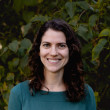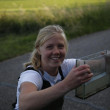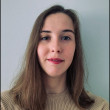Search
Filter by
Type
Tags
Dossiers
Themes
Departments
Active filters
1034 search results
Search results
-
Onderzoeksassistent (vacancy in Dutch)
De afdeling Terrestrische Ecologie (NIOO-KNAW) is op zoek naar een tijdelijke onderzoeksassistent om het SoilProS-project te ondersteunen (https://soilpros.nioo.knaw.nl/en). In dit project hebben we op 1000 locaties in Nederland bodemmonsters verzameld om het bodemleven en de abiotische eigenschappen van de bodem te meten. We gebruiken deze gegevens om te voorspellen hoe bodembeheer het bodemleven kan sturen voor duurzaam landgebruik. We richten ons op gras- (natuurlijk en agrarisch) en akkerlanden. -
MicroSOS
MicroSOS aims to establish a collaborative platform bridging academic and non-academic sectors in agriculture and facilitating knowledge exchange between researchers and industry professionals. The project focuses on enhancing agricultural resilience to climate change through microbiome-based approaches. This project is part of Staff Exchanges funded by the European Union’s Horizon Europe programme under the Marie Skłodowska-Curie Actions.
-
Camille Delavaux
Senior Researcher
-
IT administrator (vacancy in Dutch)
Ben jij een servicegerichte systeembeheerder met een passie voor innovatie die ook een gebruiker kan ondersteunen? Wil jij werken in een inspirerende wetenschappelijke omgeving waar je bijdraagt aan baanbrekend ecologisch onderzoek? Dan zijn wij op zoek naar jou! -
Nina van Boxem
Research assistant
-
PhD Seasonal Timing of Egg Overwintering Insects under Climate Change
Climate change is exerting strong selection on wild populations, with many species showing shifts in the seasonal timing of development. One particularly vulnerable group are insect species that overwinter as eggs, with warmer winters leading to stronger population declines compared to other insect species. To predict whether insect populations can adapt to climate change, we need to know the amount of genetic variation in egg development time. -
Mélody Rousseau
Laboratory Assistant
-
Ayke Haller
Researcher
-
Shining light on toad movements: testing the spatial response of toads to artificial light at night
We are looking for two motivated students (hbo BSc or university MSc) interested in working with migrating toads in the field. -
Leonardo Veglia
Junior Researcher | Project Assistant
